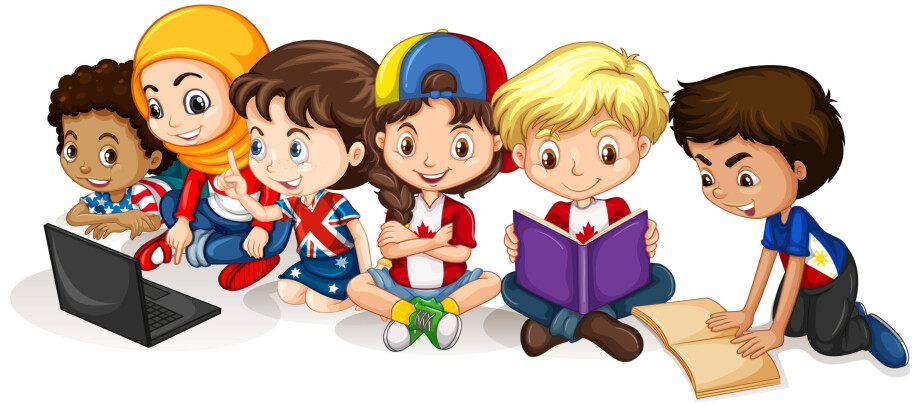One of the most common verbs in English is the verb “to have”. It has quite different meanings in various contexts. Although its learning begins from primary school, many teens and adults have difficulty in using it. To make things easier we should concentrate on practising the verb “to have” with kids and make the learning process full of fun and entertainment.
Here we suggest simple but quite interesting activities to work with the verb “to have”. They will be suitable for your primary school children to practise in the ESL classroom.
The Bag game
Prepare flashcards with different things, objects, fruit and vegetables. Take a bag and put some of the flashcards into it. Ask your kids to sit in a circle. Choose a student to start the game. He/she then takes one card from the bag and makes a sentence, such as: “In my bag, I have an apple”. The next student has to repeat the sentence his/her classmate has said, using ‘he/she has’. Additionally, this student takes another card from the bag and makes one more sentence with “In my bag I have”. Every other student has to repeat what the previous children had in their bags and then make their own sentences.
The game goes on until one of the children fails to remember an item.
Check this out as well: Food (Worksheet for Preschoolers)
2-litre jar
Divide your class into two groups. If possible, give each of them 2-litre jars. Set a time limit (5 minutes). Ask each of the groups to name one object that can be placed in the jar. They should make sentences like “I have a pen in the jar”. They can’t say “I have a crocodile in the jar,” since the crocodile can’t be placed in the jar, whereas an insect can. The game continues until the timer ends. The group that has named more correct words becomes a winner.
Guess what
Here students work in pairs. Each of them chooses an object and hides it behind his/her back. Then each student describes his/her partner what he/she has, using appropriate adjectives. For example: “I have an object that is red and round.” Then their partner may say: “I think you have an apple”.
Find someone who
Students make a table with the names of their classmates and the things they have. They ask their classmates questions, like: “Do you have a dog?”, “Do you have a cat?”, “How many books do you have in your bag?”, etc. Then they get answers like: “Yes, I do”, “No, I don’t”, “I have three books”. Students fill in the table with their classmates’ answers and then give a summary like “Student A has a dog”.
This game will help your kids to practice the verb ‘to have’ in positive, negative sentences and in questions.
Supermarket fun
Here you can use either real objects (if possible) or flashcards with fruit and vegetables. Divide your class into several groups (3-4 children in each group). Choose one shopkeeper in each group. Get your students to have a dialogue with the shopkeepers asking them what they have in the supermarket.
A sample of a dialogue.
— Do you have bananas?
— Yes, I have.
— Do you have a potato?
— No, I don’t. But I have some cucumbers.
Check this out as well: Lesson Plan About Shops for Elementary level
Animals and food
Distribute flashcards with animals and food to your students. Ask them to match the animals with the food they eat. For example, the monkey goes with a banana, the rabbit goes with a carrot, etc. Then get your students to make sentences using the verb “to have”, such as “The monkey has a banana”, “The rabbit has a carrot” etc.
This was the list of the most useful activities that helped my students to practise the verb “to have”. I do hope that your students will enjoy them as much as my students did!







 Маргарита Аветисян
Маргарита Аветисян 


